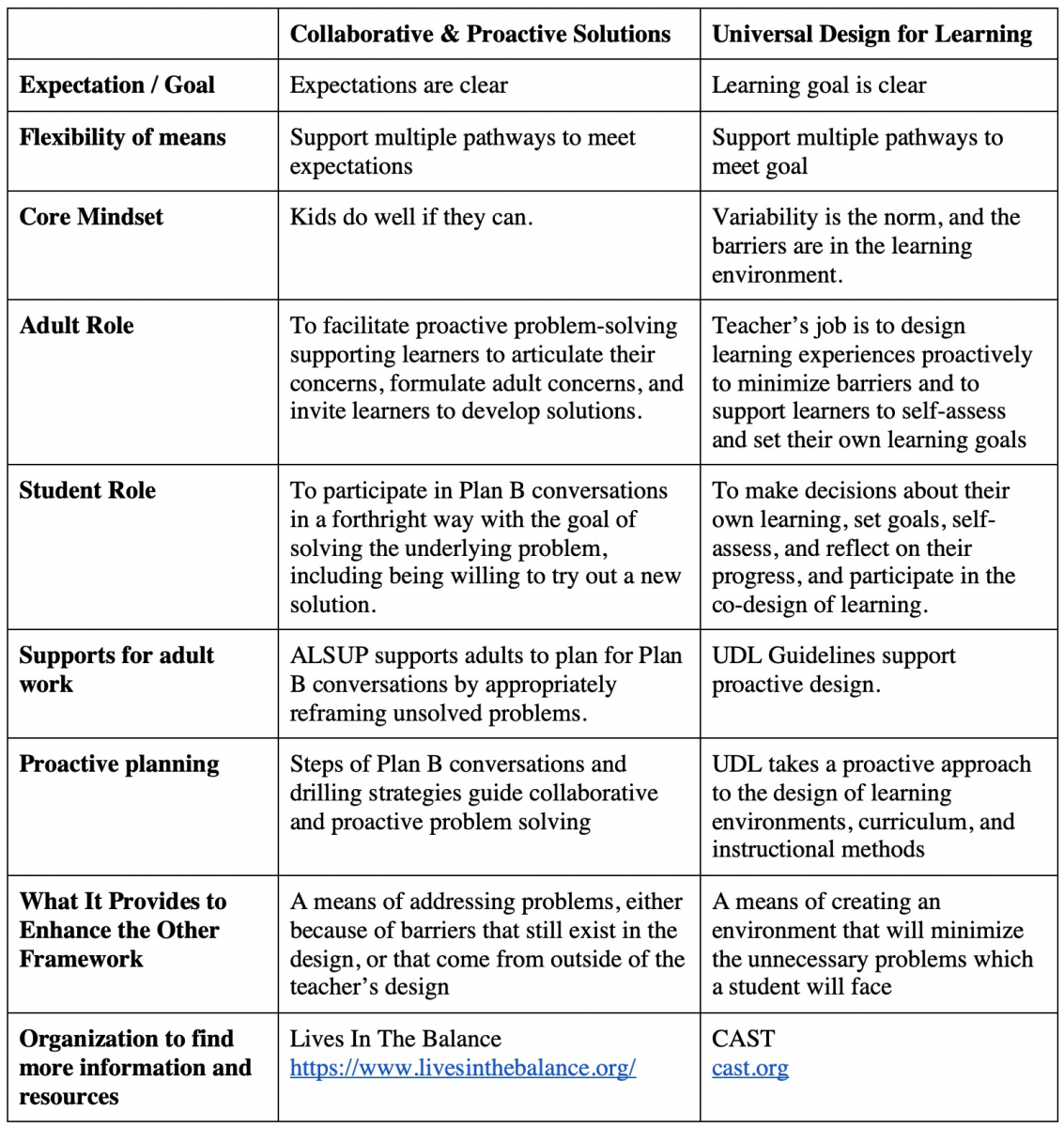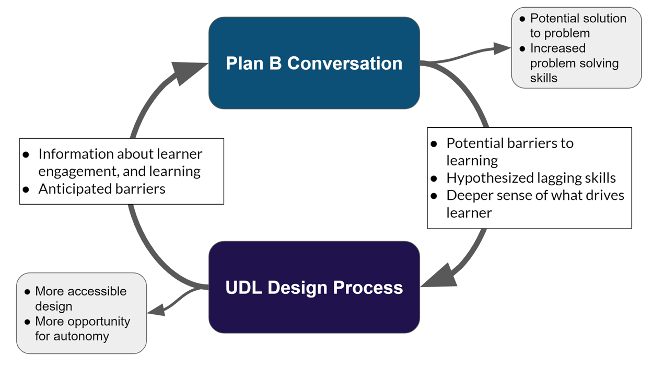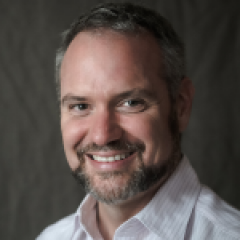Shanker Blog: Returning to School During the Pandemic: An Opportunity to Integrate Social-Emotional AND Academic Learning
As we return to school in an ongoing pandemic, how do we support all learners to heal from what has been an overwhelming emotional toll accompanied by social isolation? How do we support students from what, for some, felt like insurmountable barriers to academic learning? How do we create a pedagogical approach and a means of responding to student behavioral needs that simultaneously and synergistically prioritizes compassion and knowledge building?
Policymakers, researchers and practitioners planning for a return from the last year and a half of pandemic schooling overwhelmingly recommend two consistent focal points of our energies. In the ED COVID-19 Handbook Volume 2, the US Department of Education guides us to focus on “meeting the social, emotional and mental health needs of students... and addressing lost instructional time.” The Annenberg Institute summarizes research saying that “Unaddressed trauma diminishes students’ abilities to benefit from rigorous instruction.” And, “whole-school strategies for addressing trauma tend to be more effective than strategies that focus on identifying individual students for secondary intervention” by shaping the very culture of the classroom. During the pandemic, practitioners across the country embraced the need to check in on the social and emotional well-being of learners not just during morning circle and advisory, but during math and social studies instruction as well. This push toward an empathy orientation and creating the space for emotional processing was so important and continues to be essential as we return from the pandemic.
A Fresh Start - Uniting Two Parts of “Whole Child” Education
Classroom instruction and classroom discipline are inseparable. We know that disciplinary issues have been shown to interact in complex ways with academic learning. At its best, the heart of disciplinary systems is an effort to support young people to learn to manage their emotions, to interact socially in positive ways, and to work through the challenges of daily life. At the heart of great instructional systems is helping young people to learn important academic skills and to learn how they learn. And yet, these two aspects of schooling have long been addressed separately -- and in the current response to the pandemic, it is all the more important that we have an integrated approach rather than seeing them as competing priorities.
The lack of a coordinated approach to discipline and pedagogy creates dissonance in the fundamental relationship between students and teachers and interferes with the opportunity to develop a collaborative classroom culture. Educators often feel a tension between developing a strong learning relationship -- one in which they can support students to set goals, give honest feedback, and facilitate self-assessment and reflection -- and disciplinary systems based on methods of control. Likewise, compassionate school cultures and disciplinary systems cannot be sustained in the face of a rigid pedagogy that does not adequately respond to the needs of all learners; students’ frustration with learning will eventually result in maladaptive behaviors. Instead, to support a successful return to school, systems of discipline and social emotional learning and pedagogy can complement and indeed mutually reinforce each other to create positive problem solving relationships between teachers and students focused on working through academic, social, and emotional difficulties.
Two practical frameworks go straight to the heart of the relationship among learner, teacher, and curriculum, advocating a whole new way of seeing the learner, curriculum, classroom, and adult authority: Universal Design for Learning (UDL) and Collaborative & Proactive Solutions (CPS). These two approaches are not only deeply consistent with each other, but also are different enough in their object that they can achieve more together than either could achieve alone. CPS and UDL each focus in their own ways on the goal of making learning more accessible, and helping students become self-sustaining problem-solvers.
Starting the school year with the purposeful intention to incorporate these kinds of equitable approaches can make a real difference for teachers, who are themselves in need of a more positive learning and teaching environment. Jenna Chou, a teacher leader in New Hampshire whose school is part of a collaborative just beginning this work says, “I am excited about the potential of CPS and UDL together... CPS and UDL give students and staff a proactive and personalized learning system to address lagging skills, account for student needs in a universal way, and voice student choices.”
Let’s begin with a bit of background on each approach.
Collaborative Proactive Solutions (CPS): Seeing The Underlying Reasons For Student Behaviors
Collaborative & Proactive Solutions (CPS) is a psychosocial intervention seeking to respond to young people with concerning behaviors by working collaboratively to solve underlying problems, rather than responding to and training behaviors (Greene, 1998; 2009). These problems, or “unmet expectations” as the approach frames them, are the result of a mismatch of the individual’s current skills and the demands of the environment. The approach is succinctly summarized in the aphorism, “Kids do well if they can.” The concerning behaviors we see on the surface may be what catches educators’ attention and ire, but they are best understood as symptoms of an underlying problem rather than the problem itself. These concerning behaviors come about because of a misalignment between what is expected of a student in given situations, and the student’s ability to meet those expectations with his/her current skills -- in other words, the problematic behaviors are viewed as evidence of a student having difficulty meeting a given expectation or set of expectations. Rather than responding to the surface behavior (hitting, whining, kicking, sulking, yelling, etc.), adults seek to identify and solve the underlying problem causing the behavior. The two main tools of the CPS approach are the Assessment of Lagging Skills and Unsolved Problems (ALSUP) and a structured “Plan B” conversation to problem-solve with the young person.
The main purpose of completing the ALSUP is for all the adults involved to identify and appropriately frame a student’s unsolved problems. Each unsolved problem focuses on the expectations that the student is having difficulty meeting -- such as, “difficulty writing complete sentences in your morning journal work,” “difficulty waiting your turn to use the swings,” or “difficulty raising your hand during science class discussion.”
Once there are appropriately framed unsolved problems and the adults identify the first priority, then they enter into a Plan B conversation with the student, which consists of three steps.
- First, the Empathy step, where the adult shares the unsolved problem with the student and utilizes a collection of specific strategies to inquire about what’s making it difficult for the student to meet a particular expectation. While CPS offers specific techniques to do this, many teachers will find the Empathy step a natural extension of what they have done to check in with struggling students, especially during the interruptions of the pandemic.
- Second, the Define Adult Concerns step, where the adult shares why it’s important that the expectation be met (i.e., how the problem is either affecting the student themself, or how it affects others).
- Third, the Invitation step, where the adult recaps the top concerns of each party and invites the young person into the problem-solving process, looking for solutions that address both sets of concerns (without presuming to know what might be the best solution). The conversation ends once a realistic solution is found that satisfies both concerns.
Universal Design for Learning (UDL): Eliminating the Design Flaws Embedded in Current Learning Systems
Universal Design for Learning (UDL) is a research-based framework for optimizing learning design that accounts for the natural variability of learners by minimizing embedded barriers to engagement, how information is represented, and how learners express what they know. UDL grows from the idea that variability is the norm for human cognition and emotion. That is, brains are as unique as fingerprints. Because of this, learning experiences should be designed with this variability in mind and, in fact, the failure of some learners to thrive is a direct result of the barriers embedded in the design of curriculum materials, assessments, instruction and learning environments (Meyer, Rose, & Gordon, 2014). A human-centered designer of such a learning experience might frame these as design flaws.
The role of the educator in UDL is to clarify learning goals, anticipate barriers, and strategically design flexible options to minimize unproductive struggle. The teacher, working on behalf of the learners, creates flexibility in the curriculum in exactly those areas where barriers may exist, in how students engage, in how information is represented, and in how students act on and express what they know. Not presuming to know what might be the best solution for every student, they offer an array of options. Students choose the option that they think will work best. Both parties have a role in shaping the curriculum. Many teachers find this approach all the more necessary during shifts to remote learning this past year, and those that became skilled in it may naturally carry it back to their in-person teaching rather than “return to normal” post-pandemic.
The result of this flexible design is the opportunity for students to make learning decisions. Trying out different approaches to engaging with new learning, to taking in information or to expressing what they know, opens the door to reflection on what worked and what didn’t. The teacher now shifts from their role as a designer to become a coach by supporting reflection, giving feedback, and encouraging learners to set new goals. In this process, the teachers and students enrich their learning relationship by building toward the ultimate goal of becoming more expert at learning itself.
Both frameworks move away from trying to “fix kids” toward creating learning environments that minimize barriers to learning (UDL) and engaging them in a collaborative process to meet expectations (CPS). UDL calls us to frame barriers to learning as being a feature of the learning environment, including curriculum materials, instruction, and physical or digital environments, not the learners. CPS extends this idea to minimizing the barrier of a single way to meet an adult expectation, using the ALSUP and Plan B processes as a structured way to identify mutually satisfactory alternatives. These are exactly the non-punitive collaborative approaches that we need to respond to the most pressing needs as students return to school.

Why This Change Is Needed... And Needed Now
CPS and UDL are urgently needed changes because they each contribute to schools being able to embrace more whole-child and compassionate cultures in two primary ways. First, they each challenge the prevalent theory of classroom difficulties -- that the problem primarily resides in the student. This is needed because so often adult biases result in curriculum, structures and norms of schools that are embodiments of adult expectations and not always responsive to the needs of the students they serve. Schools are filled with assumptions about specific social, emotional, and self-management skills, as well as background knowledge and academic skills that students “should” possess. These expectations and assumptions are highly influenced by the adults’ own unexamined cultural biases and privileges (Paris & Alim, 2017; Ladson-Billings, 2021; Fornauf & Mascio, 2021).
Second, because these two approaches reframe how we understand difficulties in school, they each offer new ways to reduce and respond to those difficulties that are more supportive, empowering, and effective for both students and educators. We know that this is important not only because school discipline has a track record of discrimination, detrimental to students of color and other marginalized populations, but also because punitive discipline is ineffective at changing student behavior and is a contributing factor in students dropping out of school (Skiba, Arredondo, & Rausch, 2014). In contrast, both CPS and UDL approaches have demonstrated positive results. Studies of CPS have shown a dramatic decrease in suspensions, expulsions, physical restraints, and office referrals (Greene & Winkler, 2019). In initial research, implementing UDL has shown increased engagement, including social engagement, greater student autonomy, and improved academic outcomes. (Katz, 2013; Ok, Rao, Bryant, & McDougall, 2017) These results may be attributable to the interventions themselves or perhaps to associated mindset shifts and educators becoming more proactive.
Why An Integrated Approach Makes The Difference
A primary reason to use UDL and CPS in concert is the inherent link between difficulties in student behavior and difficulties in student learning. Some research suggests that the relationship can be explained by poor behavior causing lower academic achievement, while others suggest that it is academic difficulty that leads to undesirable behaviors, and yet other studies identify third factors as causing both the poor behavior and learning (e.g., Mendez, 2003; Gregory, Skiba & Noguera, 2010; Miller & Meyers, 2015). Each of these explanations is reasonable, especially since we understand that everyone -- not just students -- are most motivated to engage in work that they believe they can be successful at, find meaningful, and have some sense of autonomy over (Deci & Ryan, 2010). Regardless of the precise nature of the relationship, it makes the most sense to approach classroom behavior and learning as an interwoven endeavor.

The other reason to pair UDL and CPS jointly is because they each bring to the table a particular strength that the other lacks. UDL has a proven track record of designing learning environments that improve student learning experiences, but offers little guidance on problem solving when things go wrong (and things can always go wrong). By contrast, CPS focuses precisely on potential problems that may arise, but it does not address the initial design of curriculum and learning environments. Each picks up where the other leaves off and by integrating these two frameworks; there is the opportunity to create a virtuous cycle of addressing learner needs and school improvement. The process of integrated implementation can begin with UDL or with CPS. Starting with the UDL design process by articulating clear goals, anticipating barriers and designing flexible options and then careful observation of what choices students make in the course of their learning can inform future Plan B conversations. Or beginning with a Plan B conversation to support a student around an unmet expectation yields new information about potential barriers to inform UDL design. Ultimately when educators become proficient in both frameworks it becomes a seamless cyclical process. Together their combination can create an innovation greater than the sum of its parts.
Abbey Filiault, a new teacher whose teacher preparation included both CPS and UDL describes her experience combining these approaches, “CPS and UDL used in conjunction can create a wheel of endless opportunities to redesign my approach to the curriculum and how it addresses the child as an individual learner.” She goes on to explain how their synergistic use has helped her reimagine the teaching and learning process,
There’s a cyclical motion to teaching. I feel like I used to see teaching as very linear. First a teacher teaches the lesson, the students perform a demonstration of understanding, I move onto the next topic, and they demonstrate knowledge of that... This is simply unrealistic, and a bit naïve of me. Students need multiple opportunities to know and understand what you’re teaching. When something isn’t working it’s time to sit down and talk with the student, not push on through to the next unit. Then I need to go back to the lesson and adjust based on the student’s solution and try teaching the content again. Then check back in. If the solution wasn’t applicable, we need to work together and come up with a new solution, and so on and so forth. Once I embrace a cyclical method of teaching, I think it will help me feel less discouraged when something isn’t working.
Ultimately, the use of UDL and CPS can help educators reframe, reduce, and respond to the trauma of pandemic learning quite differently than systems built on control and reactivity like rigid, scripted curricula and behaviorist models using rewards and punishments. By understanding that the child is not the central problem when things go wrong -- neither when learning is stalled or when behavior is undesirable -- we can proactively plan for better outcomes, collaboratively with all of our students.
“Back To School” Can Be The Start Of Something Better
Educators are beginning to integrate these approaches as they launch the school year. Assistant Principal Kathy Eisenhower from West Park High School in Roseville, California says,
In this pandemic it is common to hear phrases like ‘learning loss’. We want to turn this deficit thinking on its head… This is our unique chance to upset old ways of thinking and operate from a stance of hope. This absolutely must start with listening. By combining UDL with Collaborative and Proactive Solutions we are creating a school culture that values student voice and seeks to include them in determining their own outcomes.
When UDL is routinely practiced, its end goal goes far beyond access to the current curriculum, and aims for all students to become more expert at learning, knowing themselves, and approaching new learning undaunted -- all of the skills that became crucial during pandemic learning. In CPS, students who regularly engage in Plan B conversations become more expert in identifying what gets in the way of their success, understanding other people’s concerns, and finding mutually satisfactory solutions that address everyone’s needs. By integrating both UDL and CPS into our recovery plans, we can create a pathway toward a healthy pandemic recovery for young people and a new vision for the compassionate integration of academic, social, and emotional learning for our schools into the future.
This blog post has been shared by permission from the author.
Readers wishing to comment on the content are encouraged to do so via the link to the original post.
Find the original post here:
The views expressed by the blogger are not necessarily those of NEPC.

